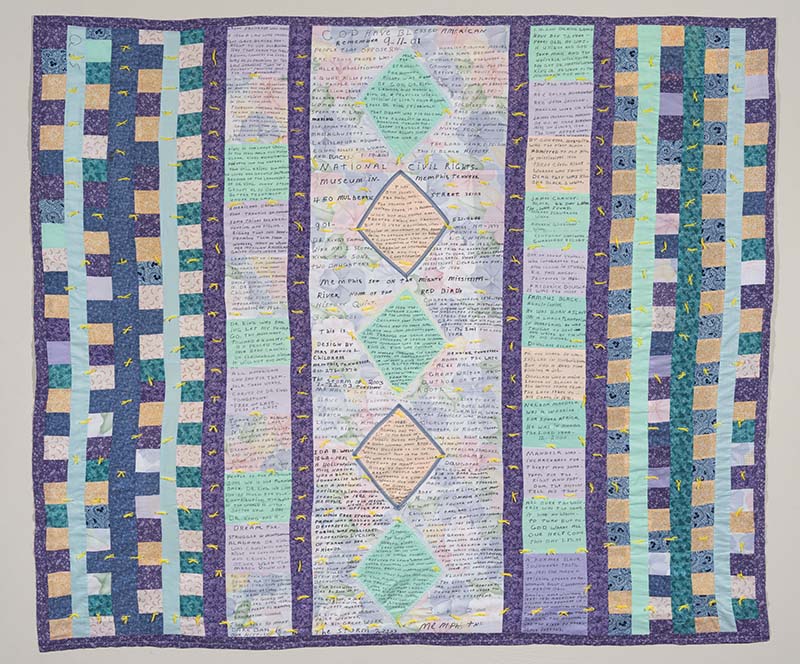
| Maker | Hattie Childress (1923–2016) |
| Date of Creation | 2001 |
| Location | Memphis, Tennessee |
| Materials | Cotton |
| Institution | Memphis Brooks Museum of Art |
| Credit Line | Memphis Brooks Museum of Art purchase; funds provided by Dr. Rushton E. Patterson, Jr., and Dr. James K. Patterson |
| Accession Number | 2006.24: (MBMA, TEX 79 BX) |
| Photo Credit | Photography by Chip Pankey |
Hattie Childress’s Civil Rights Quilt pays tribute to the advocacy of equal rights in the United States and the legacy of self-taught women artists in the Mid-South. A sea of text dominates the central panels of the quilt, noting key moments in civil rights history, dates of tragic events such as 9/11 and the Memphis storm of 2003, and biographical details of prominent leaders such as Ida B. Wells, Malcolm X, Cesar Chavez, and Nelson Mandela. Childress, the daughter of Black sharecroppers, lived in Memphis during several pivotal moments of the Civil Rights Movement, including the 1968 Memphis Sanitation Workers’ Strike and the subsequent assassination of Dr. Martin Luther King, Jr. The quilt is a testament to Childress’s expertise and experimentation in an art form traditionally practiced by women in the United States. For enslaved Black women in the Antebellum South, quilting was an assertion of agency and identity. Their quilts were often imbued with stories of their lived experiences and collective journeys. In the civil rights era, quilts were used as tools to reflect the time, combining messages of political purpose alongside messages of empowerment in the march towards freedom. When asked how she learned to quilt, Childress said, “When I was a little girl in Somerville, [Tennessee], I used to watch my mama and grandmama sit around in the wintertime with needle and thread and make quilts. They didn’t do that in the summer; they were out in the fields working then. I watched them, and it just rubbed off on me. I worked all my life, but when I retired, I went to making quilts.”
